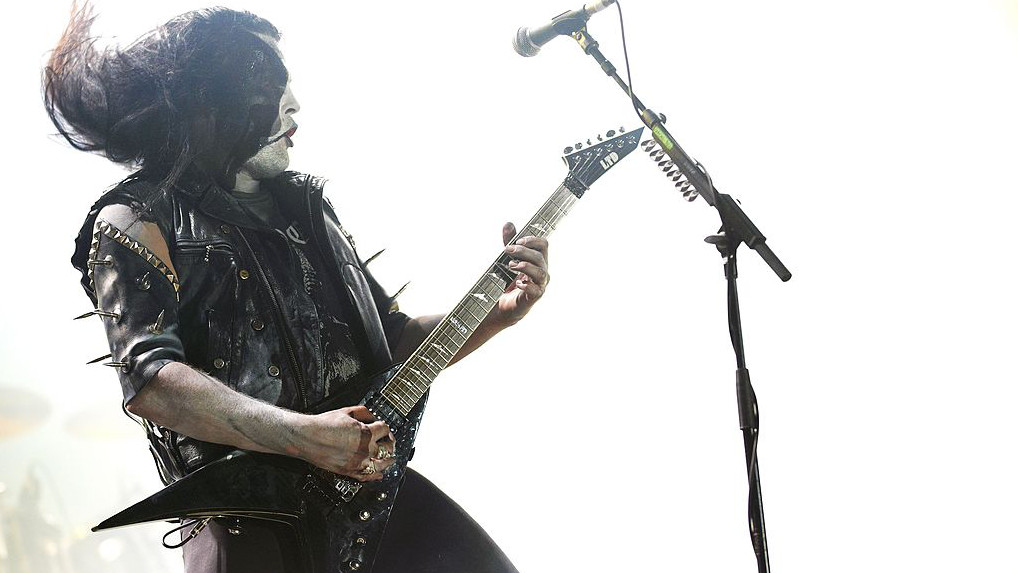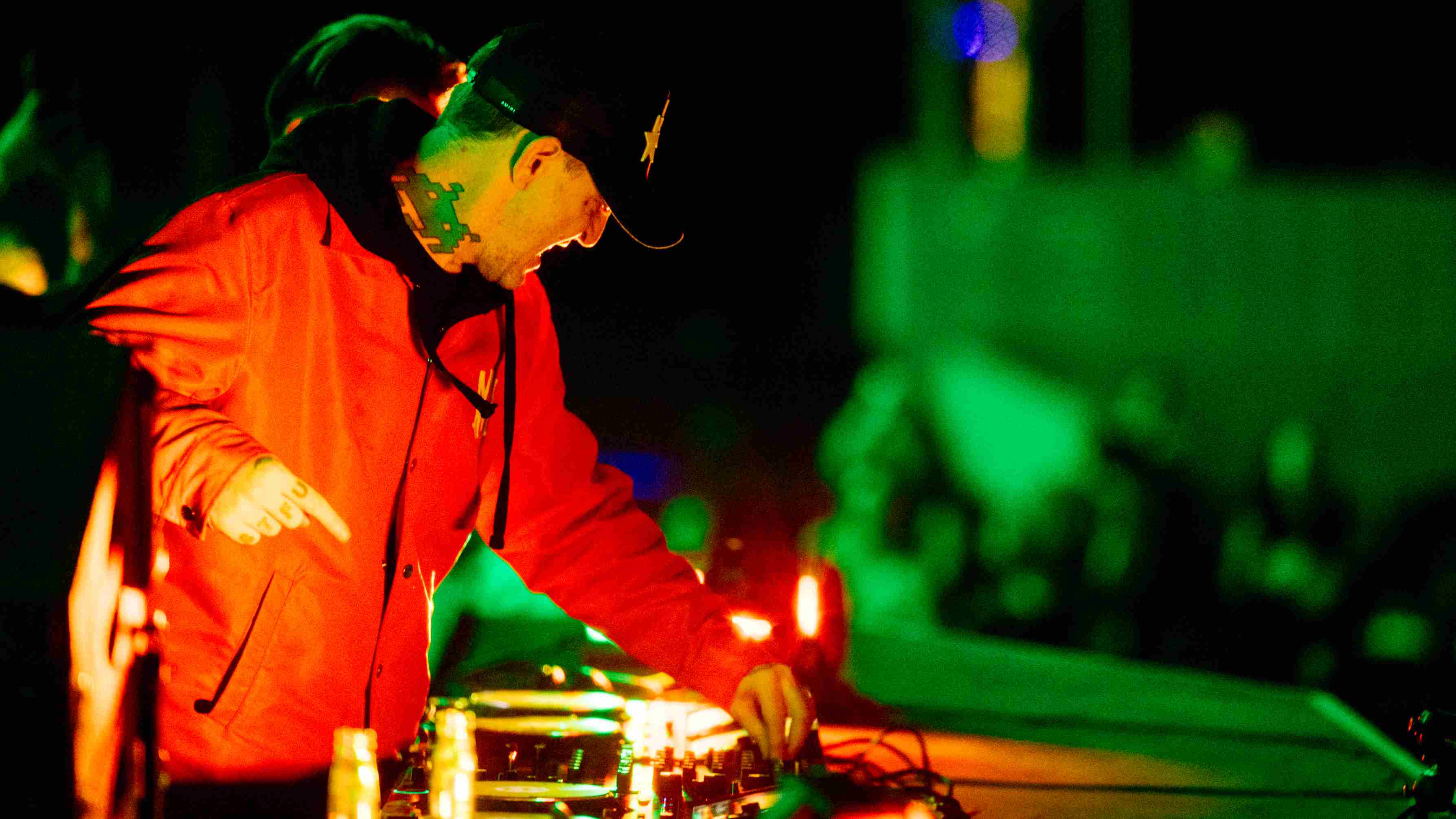Zeal & Ardor: “I see [the guitar] as a tool. And I am very cautious of romanticising the tool rather than the action”
We talk to avant-garde Swiss metal enigma Manuel Gagneux

Manuel Gagneux’s Zeal & Ardor take black metal through the darkest chapters in American history and reimagine it with African-American spirituals and unholy gospel verse.

Manuel Gagneux is a bona fide radical. The Swiss-American mastermind behind Zeal & Ardor has an easy bonhomie but rest assured he knows where the cultural pressure points are, and he’s not afraid to bear down upon them Ezekiel 25:17-style with great vengeance and furious anger in service of a new, dangerous sound.
With Zeal & Ardor, Gagneux takes the frigid cold harshness of black metal and fuses it with African-American spirituals, hollers and gospel, constructing a counterfactual folklore that imagines a slave population eschewing Christianity and turning to the devil in search of spiritual succour.
Maybe it shouldn’t work. Maybe the dissonance between the two cultures is too great: the most ideologically rigid of all heavy metal subcultures, black metal is fiercely individualistic, oft-animated by an unyielding antichristian animus; the song and verse of African-American spirituals and gospels are by their very nature communal, God-fearing, uplifting. But in Zeal & Ardor’s hypnotic and ceremonial arrangements, Gagneux embraces the duality between the two cultures, identifies where they align, and makes something cohesive.

The defiant one
Tiziano [Volante, guitar] has inhumanly flexible hands so he can actually do two guitar lines at the same time that my puny, mortal hands couldn’t
“For me, that’s the most interesting part, because black metal on its own is very individual,” he explains. “It has this solipsistic nature, where it’s just headphone music, or whatever. You listen to it alone. But since the gospel aspects have this very inviting and enticing quality, you want to sing along. It actually invites the whole black metal element into this weird shared space, I guess. That’s kind of what we are chasing, and we’ll see how far we get.”
Tonight Zeal & Ardor are bringing that shared space to London’s Electric Ballroom. The show will be recorded for a live album, released by the time this is published, and it’s testament to how far Gagneux has brought this sound since conceiving the project in 2013. Getting it on record is tough, a process of layering waspish, trebly guitars and knowing when and how to deploy them; the vocals always take the lead, not the riff.
Adapting Zeal & Ardor’s arrangements for the stage was a more formidable proposition still. “At first I was really afraid,” admits Gagneux. His band, however, had the answers. “The first time we were in the rehearsing spot, they had already learned all of the pieces, and they had autonomously arranged what they could play. Tiziano [Volante, guitar] just did a bizarrely good job. Also, he has inhumanly flexible hands so he can actually do two guitar lines at the same time that my puny, mortal hands couldn’t. Sometimes we had to reduce it because we were only three voices, but that was the only actually palpable difference, or rearrangement. Instrumentally it’s pretty much similar.”
Get the MusicRadar Newsletter
Want all the hottest music and gear news, reviews, deals, features and more, direct to your inbox? Sign up here.

String theories
Gagneux is a reluctant guitarist. His mother is a jazz singer and his parents always wanted him to play an instrument. He tried the saxophone but that only lasted a couple of years; he hated that it was monophonic. “I never made it to the point where you could differentiate whether I was good or not,” he laughs. He played the piano. The guitar came along when he was 14.
I see [the guitar] as a tool. And I am very cautious of romanticising the tool rather than the action
“That was kind of parallel to the piano,” he says, “and it was like this really disgusting BC Rich Warlock, which I just thought was the coolest thing on the planet.”
Nowadays, he’s cautious in talking about the guitar as anything other than a means to an end, albeit one he’s learning to love. “I see it as a tool. And I am very cautious of romanticising the tool rather than the action.”
Nonetheless, the guitar is crucial to Zeal & Ardor’s sound, its brittle, fuzzed-out distortion ever-present in their two studio albums, Devil Is Fine Is Fine (2016) and Stranger Fruit (2018). A track such as Servants, from Stranger Fruit, is typical of how Gagneux uses guitar; it gives a rhythmic counterpoint to the slack tempo of the verse, almost as percussion, and when the song transitions into its next element the guitar is functionally more orthodox black metal, putting an acerbic spin on an elegiac, tremolo-picked melody. “I tend to use guitars more as textures," says Gagneux, “especially in black metal, since there’s a lot of tremolo picking, you could orchestrate it like a strings section because you have different takes and can pan it out. Guitar is rarely the focal point of my music but it’s integral to it. I see it either as this very spacious string section element, or as a percussive instrument, with palm-muted hits and nasty distortion.”
Stranger Fruit was produced by Gagneux with Zebo Adam, an Austrian producer whose credits are more pop and indie-rock but who is described by Gagneux as a “serious black metal head”, and it was mixed by Kurt Ballou. Working with these guys, Gagneux had to learn an appreciation for chasing tone. Or rather the patience for it. “As soon as I could recognise something that vaguely resembled guitar I was happy with the tone, whereas those two guys are anal about it,” he laughs. “Just taking the time to properly record, or to reamp things, to test out dozens of different amps prior to deciding on what exactly to use, that was the difference.”

Main source
If patience is hard to come by, the ideas come easy. Field recordings taken by ethnomusicologist Alan Lomax and his father, John, were an early source of inspiration, particularly on Devil Is Fine. The Lomaxes would travel across America’s South, visiting prison farms and penitentiaries, where they documented early African-American folk music. Finding a way to reinterpret these cadences, old hollers sung in techniques long forgotten, is part of the challenge.
I used to emulate these voices as close as they could, and they have a very strange timbre to themselves
“I used to emulate these voices as close as they could, and they have a very strange timbre to themselves,” says Gagneux. “The timbre they have is very telling, and very much of their time; it is nothing that you really hear anymore.”
On Stranger Fruit, there was more experimentation as Gagneux workshopped his own hollers. The lyrics, and how the vocal patterns will fit, are the first pieces of the puzzle; the instrumentation will be accommodated around the vocals.
“I would say like 70 per cent of the time it is like that,” he says. “Because, especially with this music, the vocals and the call and response, the schema of it has such a percussive connotation that it dictates everything around it. Also, it is this great simulacrum to get you into this headspace because it has the inviting aspect to it, and it immediately transports you to some field in the Louisiana area.”
Gagneux’s practice of journeying back and invoking the horrors of slavery, using the weight of history to inform songs that tell stories all-too-relevant to our present era, carries with it a certain responsibility. The extremity of those human experiences are not lost on Gagneux. Those who lived under such conditions knew extreme; people such as Robert Smalls, whose picture graces the cover of Devil Is Fine. Smalls was born into slavery. In 1862, during the American Civil War, he freed himself and others by commandeering a Confederate ship and sailing it north into Union waters. These are the sort of stories Gagneux tells, and he warns us against the guarding of culture, of making it exclusive, or sacred. The evolution of art and culture demands that it be malleable, so the story may be told anew. Of course there is a message to Gagneux’s music that is impossible to miss, but he prefers that the audience make their own mind up.
“I actually insist upon it,” he says. “It’s such a futile effort to have people think about exactly what you were thinking about while writing it... I don’t think it makes it less valid than my interpretation of it.”
Lord of chaos
The historical research demands a certain discipline in how Gagneux searches for and mines ideas, but there is nonetheless an irresistible appetite for chaos and chance that not only affects how Gagneux approaches his writing but how his band came together in the first place. It’s an origin story that could only be set in the third modernity of now.
Famously, Gagneux consulted 4chan for advice on what sort of sound his next project should take. He sought unvarnished feedback and counsel from the void, from people who really don’t care. The void delivered. “I was just into Aleatoric music, where some element of music is left to randomness or chance,” he says. “That’s about as random as it gets. I got two different musical genre suggestions out of ‘the community’, as it were, and tried to make sense of it.”
Gagneux’s smiling. He knows all this is kind of crazy. But here he is, an hour from show time, and shitposters on the internet, by chance, showed him the way. What could be more black metal than embracing chaos and chance to create a new extreme? “That’s what I see as the hypocritical part of black metal,” he sighs. “It used to be this fringe thing where anything goes. But now there are so many rules to adhere to, which seems like a total 180 on the original thought of black metal, so I don’t think that it’s too much of a stretch what I am doing. Maybe it is a bastardisation. To some, I’m pretty sure it is. But I am also pretty sure it adheres to the initial thought of it, to do something new. And, y’know, I don’t think that we’re making black metal more harmless with this.”
Zeal & Ardor play ArcTanGent Festival on 15 August
Jonathan Horsley has been writing about guitars and guitar culture since 2005, playing them since 1990, and regularly contributes to MusicRadar, Total Guitar and Guitar World. He uses Jazz III nylon picks, 10s during the week, 9s at the weekend, and shamefully still struggles with rhythm figure one of Van Halen’s Panama.
“A purpose-built solution for bassists seeking unparalleled sound-shaping capabilities”: Darkglass Electronics unveils the Anagram Bass Workstation – a state-of-the-art multi-effects for bass guitar with neural amp model support and a 7” touchscreen
GAK is gone: UK music store giant GAK just got bought by Gear4music for £2.4 million












